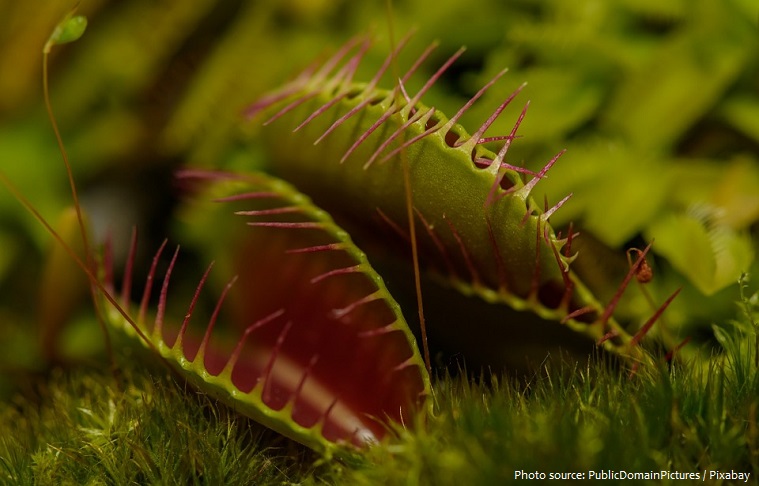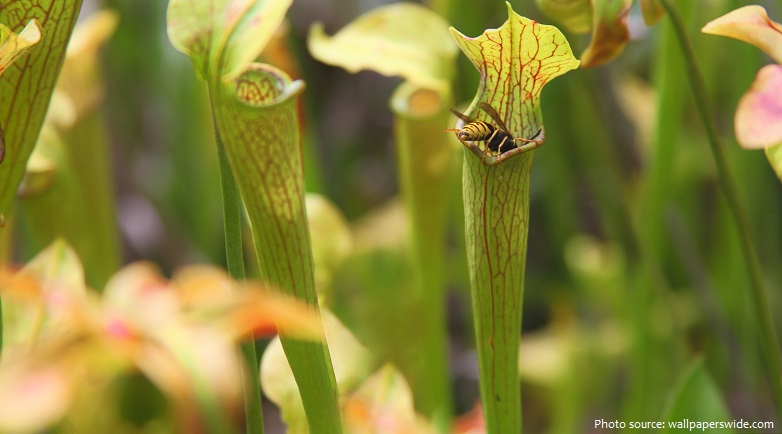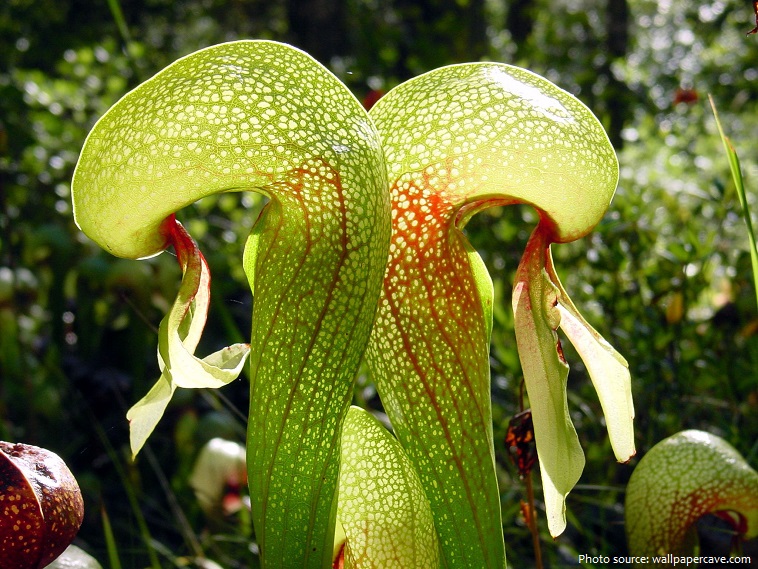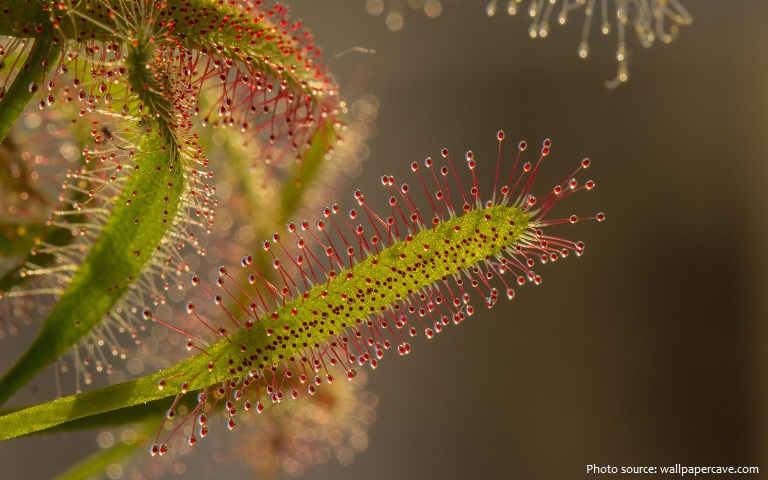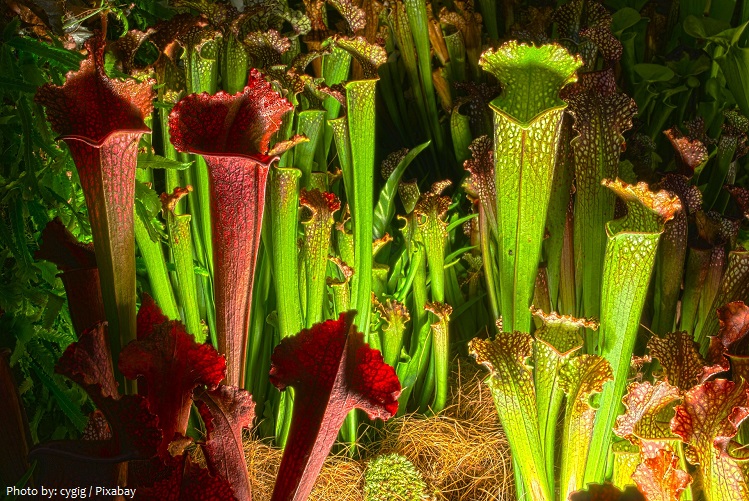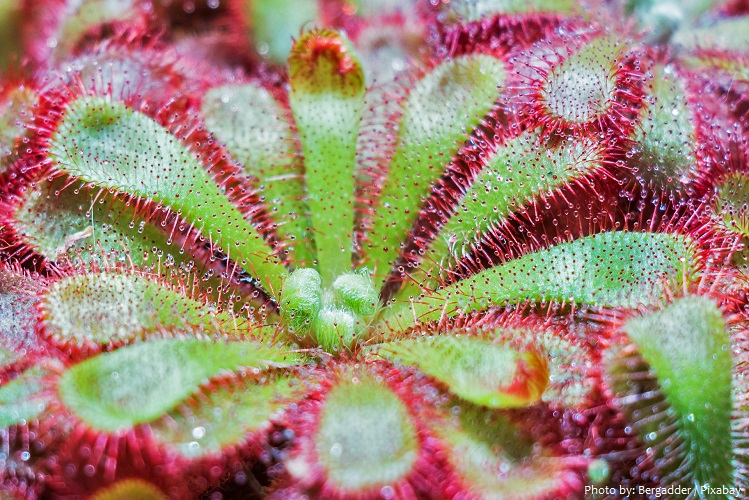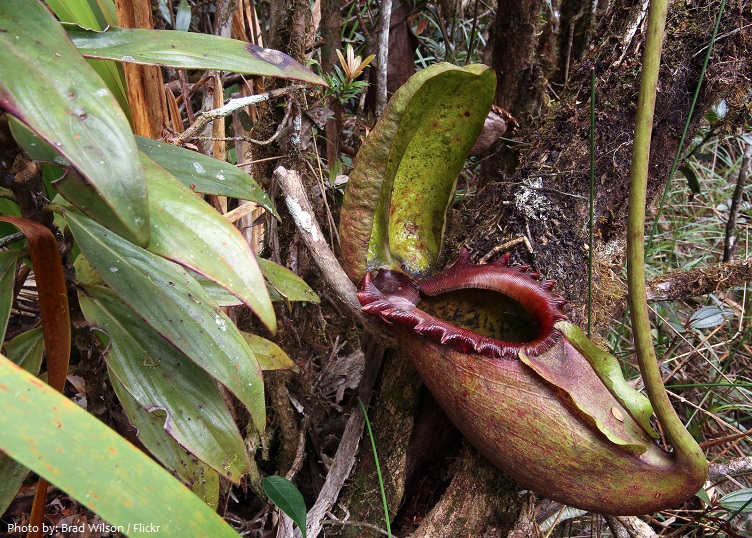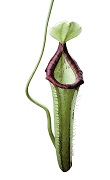Carnivorous plants are plants that derive some or most of their nutrients from trapping and consuming animals.
They are flowering plants of worldwide distribution with leaves adapted for trapping small animals, especially insects.
Because they usually trap insects, they are also called insectivorous plants.
Ther are about 580 known species of carnivorous plants.
Carnivorous plants actually get their energy from photosynthesis, just like other plants do. As you probably know, in photosynthesis plants use light energy to make sugar from carbon dioxide and water. Oxygen is a waste product. Plants make other molecules from the sugar, like starch for energy storage, or cellulose for structure.
Carnivorous plants use the prey for nutrients that they need, because they grow in places where aren’t many nutrients in the soil.
Many different kinds of plants have different attracting structures such as colorful leaves and flower parts, some produce sweet sugar secretions (like nectar) and some produce strange smell.
There are five basic trapping mechanisms are found in carnivorous plants:
• Pitfall traps (pitcher plants) trap prey in a rolled leaf that contains a pool of digestive enzymes or bacteria.
• Flypaper traps use a sticky mucilage.
• Snap traps utilize rapid leaf movements.
• Bladder traps suck in prey with a bladder that generates an internal vacuum.
• Lobster traps, also known as eel traps, force prey to move towards a digestive organ with inward-pointing hairs.
Most carnivorous plants eat flying, foraging, or crawling insects. Those that live in or around water capture very small aquatic prey like mosquito larvae, tiny fish and small frogs. Diet of some very large species also include mice and rats.
Using enzymes or bacteria, carnivorous plants digest their prey through a process of chemical breakdown analogous to digestion in animals. The end products, particularly nitrogenous compounds and salts, are absorbed by the plants to enable their survival under otherwise marginal or hostile environmental conditions.
Dionaea muscipula, also known as the Venus flytrap, is probably the most well known of the carnivorous plants. Insects are lured into the mouth-like leaves by nectar. Once an insect enters the trap it touches tiny hairs on the leaves. This sends impulses through the plant triggering the leaves to close.
Carnivorous plants do not need to feed everyday. In fact two or three feedings a year may well be enough for most of them. If they have the chance to catch more, they will, and benefit from this natural “fertilizer.”
On the whole, carnivorous plants are relatively small, but size variation is enormous even within the same genus. The majority are herbaceous perennials less than 30 cm (1 foot) high, often only 10 to 15 cm (4 to 6 inches). Some species of Nepenthes, however, become large shrubby vines.
The Giant Montane Pitcher plant, Nepenthes rajah, is the largest meat-eating plant in the world. It’s big enough to trap rats – though it doesn’t do it very often. But there’s another taste it prefers to that of meat: poop. Specifically, the waste of the tree shrew.
The fastest carnivorous plants are aquatic bladderworts (genus Utricularia), which use suction-based traps to capture prey such as small crustaceans, insect larvae and even young tadpoles. One species (U. australis, aka the southern bladderwort) has been recorded ensnaring victims within as little as 5.2 milliseconds, though around 9 milliseconds is the more typical timeframe.
Plants that trap and digest tiny animals have fascinated people for centuries. It was known by 1790 that sundews, pitcher plants, and the Venus’s-flytrap could catch insects. This interest led Thomas Jefferson to collect Venus’sflytraps near Charleston, South Carolina, for study. A century later, Charles Darwin referred to the Venus’s-flytrap as one of the most wonderful plants in the world.
Carnivorous plants have long been the subject of popular interest and exposition, much of it highly inaccurate. Fictional plants have been featured in a number of books, movies, television series, and video games. Typically, these fictional depictions include exaggerated characteristics, such as enormous size or possession of abilities beyond the realm of reality, and can be viewed as a kind of artistic license.
The earliest known depiction of carnivorous plants in popular culture was a case wherein a large man-eating tree was reported to have consumed a young woman in Madagascar in 1878.
